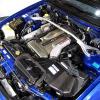How does HICAS get YAW-RATE FEEDBACK in an R33????
Announcements
-
Similar Content
-
Latest Posts
-
By TurboTapin · Posted
If this is required due to the installation of a GTR hood on a GTSt, the existing GTSt one can be modified to fit. -
is it common on RB25det motors that the exhaust manifold nuts become loose overtime? I was inspecting some stuff and noticed that a couple of nuts were so loose that I could literally turn it by hand. Everything is stock on exhaust side unless when they installed the dump pipe they had to remove the manifold for whatever reason. I'm surprised the boost leak didn't show up on the test lol.
-
By Dose Pipe Sutututu · Posted
Haha watch Alex's eye twitch when you mention Nistune to him in person lol. He's not a fan, then again it's quite a niche product. I personally don't mind them, but most usually steer clear from it. Word of advice, do not ground the AFM to the chassis, there are heaps of incorrect guides on the interwebs. Send both GND on the AFM back to Sensor GND on the harness. -
Note I edited my post, so Sleeper's quote is not the same as what I meant any more.
-




Recommended Posts
Create an account or sign in to comment
You need to be a member in order to leave a comment
Create an account
Sign up for a new account in our community. It's easy!
Register a new accountSign in
Already have an account? Sign in here.
Sign In Now